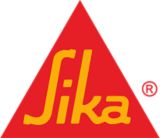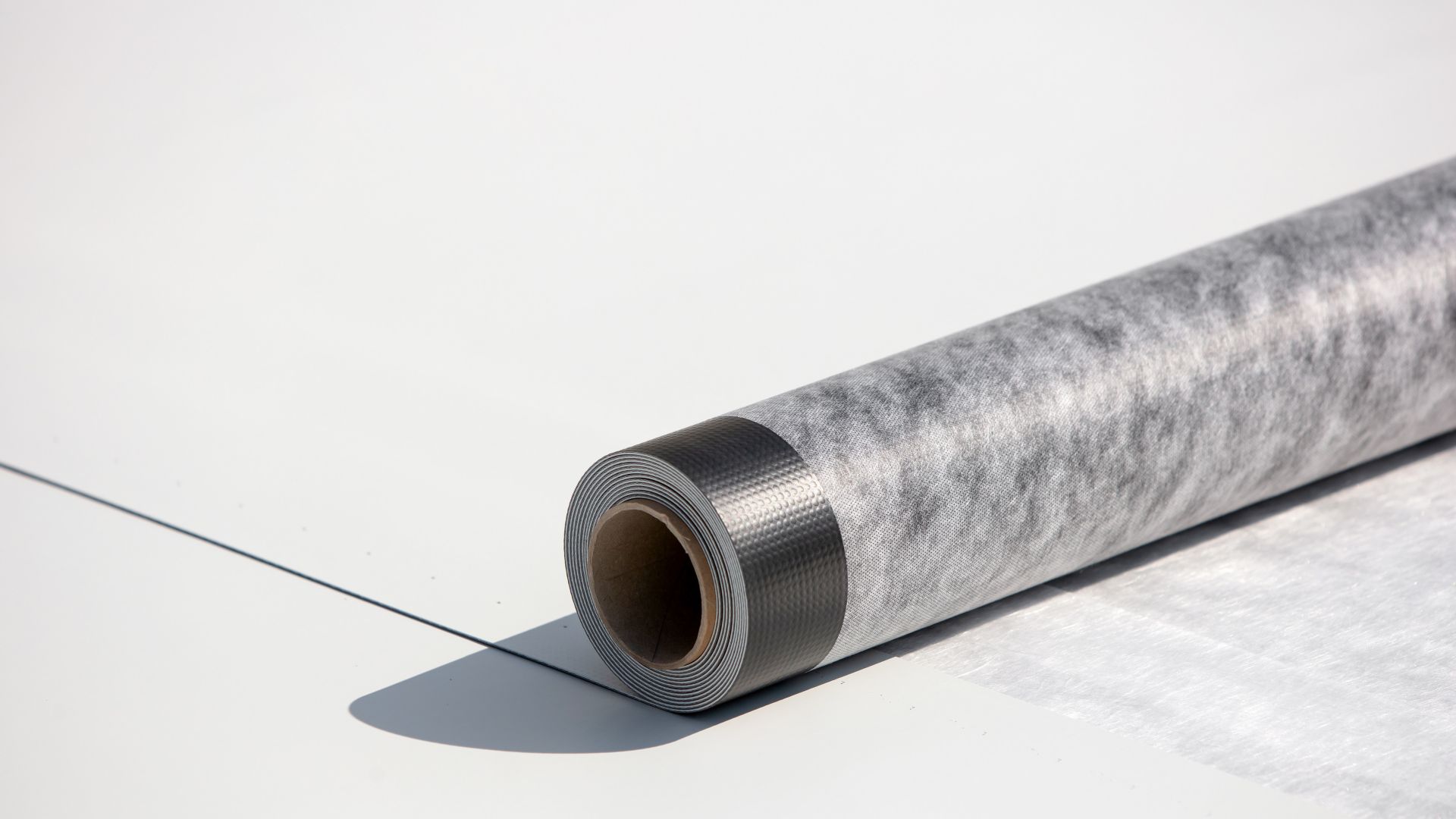The new patented hybrid Sarnafil® AT technology refers to a versatile membrane that is easy-to-apply and long-lasting for sustainably designed roofs. Sika has combined all the best attributes of single-ply roof membranes into one new ‘Advanced Technology’ Sarnafil® AT.
A New Generation of Roofing Membranes
Unique hybrid technology for a smarter roofing experience
As the global leader in single-ply roofing, Sika has created a highly flexible membrane with the ultimate combination of durability, sustainability and ease of installation. The new technology combines advantages from all existing membrane technologies, with good durability and the freedom of design, to flexibly adapt to different project demands.
Hot air weldable roof membrane formulated for direct exposure
Sarnafil® AT is a membrane based on flexible polyolefins (FPO), with internal fabric reinforcement and backing in accordance with EN 13956. The membrane is fully compatible with all existing Sarnafil® T accessories and ancillary components.
Sarnafil® AT is a hot air weldable roof membrane formulated for direct exposure and designed for use in all global climatic conditions.
Uses
Roof waterproofing membrane for:
- Mechanically fastened systems
- Ballasted systems e.g with gravel, concrete slabs and for green roofs (intensive & extensive), inverted roofs, plus on terraces with pedestrian traffic
Sarnafil® AT: Cradle to Cradle Certified™
Sika embarked on its first Cradle to Cradle Certified® project for Sarnafil® AT in 2020. Sika was successful in achieving an overall certification level of Silver for the product in in accordance with version 3.1 of the Cradle to Cradle Products Standard. Sarnafil AT® also received scores of Gold for the Material Reutilization and Social Fairness categories. In 2023, the Cradle-to-Cradle Products Innovation Institute introduced a new, more rigorous product standard version (v4/4.1). During this certification cycle, Sika successfully upgraded four certification categories to this latest standard—an achievement that underscores our commitment to continuous improvement.
As part of the Cradle to Cradle Certified™ process, Sika has also published a Material Health Certificate for Sarnafil® AT. The Material Health Certificate offers a solution to growing industry and consumer interest in knowing more about the chemicals used in products across their supply chains and avoiding chemicals of concern.
A white paper explaining Sarnafil® AT and the Cradle to Cradle Certified® program was published by Sika Germany and is available for download.
Continuous Improvement Journey
Sika is working to continuously improve the sustainability performance of Sarnafil® AT as part of its commitment through the Cradle to Cradle Certified® program. The adoption of Cradle-to-Cradle (C2C) principles marks a significant step forward for Sika and the broader construction industry.
Sustainability is no longer an emerging trend—it is a fundamental requirement for business success. By integrating the C2C framework into its product development strategy, Sika has reinforced its position as a pioneer in sustainable building materials and a trusted partner in the transition to a circular economy.
As part of Sika’s net zero commitment, keeping materials in constant cycle has been identified as a key lever and will be one of the key focus areas for R&D in the coming years.
For further information, please visit the Sarnafil® AT page on the Cradle to Cradle Products Innovation Institute’s website.
Circular economy: Take-back program
Sika offers a take-back program for their FPO-based roofing membranes. The used membranes are cut into strips and transported to a recycling facility, where they are mechanically processed into granules. This post-consumer recyclate is of high enough quality to be utilized in manufacturing the backing layer of new membranes of the same type. Specific content limits are set to ensure that the recyclate does not adversely affect the durability or mechanical properties of the new membranes.
The Sarnafil® AT FSH Self-healing Technology
Roofing technology has seen a remarkable advancement with the emergence of self-healing solutions, thanks to the power of water-reactive polymers. With the advent of this innovative technology, roofs now possess the remarkable ability to heal themselves, offering a reliable way to protect critical building assets.
Explore the fascinating science behind water-reactive polymer technology and what factors to consider when deciding whether to use them on your projects.
Water-reactive polymer technology represents a remarkable innovation in the roofing industry. With its remarkable ability to autonomously heal minor cracks and punctures, the innovative Sarnafil® AT FSH Self-healing Technology provides an innovative yet reliable solution for building owners and contractors seeking to protect high-value or critical assets.
Advantages for Owners and Designers
Sustainable
Sarnafil AT® is the first and only thermoplastic roofing membrane in the market to be Cradle to Cradle Certified™.
Hail Resistance
High resistance to impact and damage e.g. hail, to ensure a longer service life.
Long Term Performance
QUV tested for long-term service and durability for decades.
What does the owner of the roof refurbishment project at Leister Building think about Saranfil® AT after it has been applied on Leister’s roof?
Advantages for Contractors
Highly Flexible
Highly flexible like EPDM, even at low temperatures, which allows faster rollout of the membranes on site.
Easy to Apply, Faster Installation
Easy, faster application and detailing work. Self adhesive tapes and membranes for detailing and upstands.
Hot Air Weldable
Easy to weld and produce reliable welds like PVC, but also with an even wider welding temperatures window.
What does the contractor of the roof refurbishment project at Leister Building think about Sarnafil® AT after it has been applied on Leister’s roof?
Compatible
A wide variety of accessories are available, as it is compatible with all existing Sarnafil® FPO-Systems.
Impact/Puncture Resistance
High resistance to impact damage, which helps to avoid punctures during installation and service.
Welded Seam Performance
Seam collapse test value of more than 3 x that of EPDM, for long-lasting waterproof seams.
Sarnafil® AT-Technology: Thermoplastic + Elastomer
Sarnafil® AT-Technology
Sarnafil® AT is an elastomer modified FPO Membrane for roofing applications. The technology combines the advantages of FPO and elastomer membranes (as a hybrid). That means the Sarnafil® AT has excellent and easy weldability, safe and easy application (no solvents), high hail resistance and good application behaviour at low temperatures. Sarnafil® AT contains FPO thermoplastic and elastomer.
Thermoplastic
Thermoplastics consist of long, threadlike, unlinked molecular chains. Thermoplastics can easily be deformed in a certain temperature range. This process is reversible, i.e. it can be repeated as often as desired by cooling and reheating to the molten state. With rising temperature, the molecular chains become increasingly mobile during the melting process. They may also disentangle themselves and slip apart. This molecular mobility makes it possible to weld the membrane.
Elastomer
Elastomers are plastics whose special property is their high rubber-like elasticity, even at low temperatures. Elastomers are therefore dimensionally stable, but as they are elastic will return to their original shape after deformation. The molecular chains of elastomers are described as being wide meshed.

